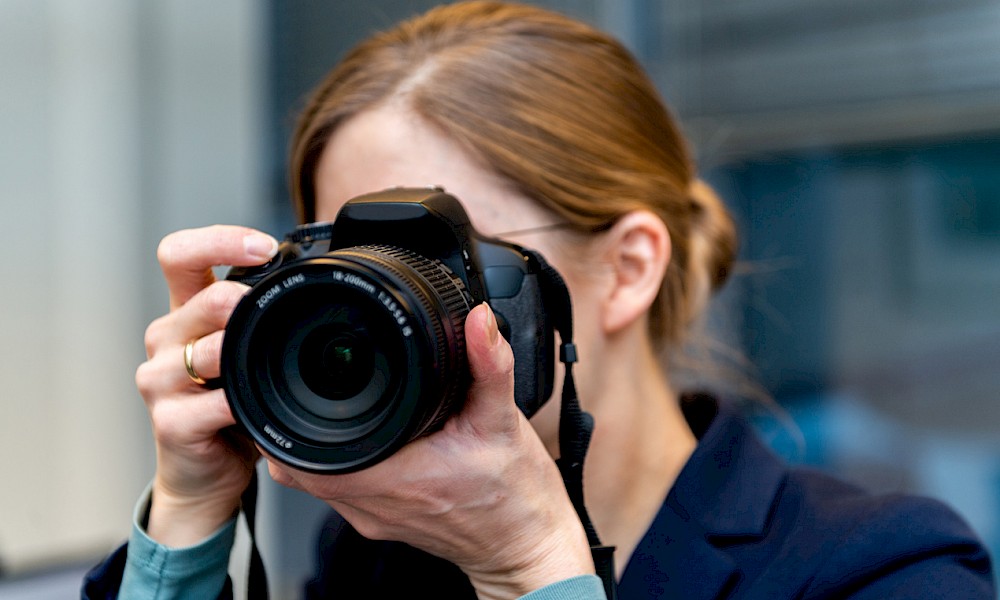Cultural assets in 3D: Students at Münster University of Applied Sciences digitise exhibits from 28 museums in Münsterland
Digital exhibition goes on tour in a container in August and September
The "Apocalypse Münsterland" project is trying out new mediation methods and has students from Münster University of Applied Sciences digitising cultural objects from 28 museums throughout Münsterland. The techniques: 3D scanning and 3D modelling. The exhibits are to go on tour through the region in a mobile exhibition in late summer.
Light a fire in the mill house, puzzle together a picture by Bauhaus artist Heinrich Neuy or operate the steam reel in the Ibbenbüren Mining Museum. Students at Münster University of Applied Sciences are making it possible and are now using VR technology to bring cultural objects from all over Münsterland to life. Under the motto "Museum of the Future", they are digitising exhibits from 28 museums and exhibition halls in the region, which will go on tour this summer in a newly designed exhibition in a container. Today, the museum representatives were able to view their digital exhibit through virtual reality glasses for the first time and learn about the technical processes.
Behind this is "Apokalypse Münsterland", a cooperation project of 28 museums and exhibition houses under the project management of Münsterland e.V., which is trying out new mediation methods in the museum sector.
"The selected exhibits were a challenge for our students, because we have such diverse objects as paintings, buildings, figures or machines with us," explains Professor Ulrich Blum from Münster University of Applied Sciences, Department of Architecture. "Accordingly, we tried out and applied various techniques to create an optimal 3D model and do justice to the cultural assets."
A total of eleven objects were digitised with the 3D scanner "EVA". Antje Kerkmann, a research assistant at Münster University of Applied Sciences, explained how this works: "The 3D scanner takes several scans and photos every second, which are put together on the computer with a special programme to create a 3D model of the cultural asset." The students modelled eleven other objects with special programmes based on a photo or the real object. "In this process, the objects are measured and the dimensions are then transferred to the programme. From individual corner points in 3D space, the body of the object is thus gradually remodelled," says Kerkmann. In addition, three intangible cultural assets and three pictures were digitised.
In a second step, Münster UAS is working more intensively on the virtual staging of the cultural assets with the support of BOK + Gärtner GmbH (agency for communication design and scenography based in Münster/Berlin). "We want to make the stories behind the cultural assets playful and tangible with the help of digital media," says Christian Vogler, managing partner of BOK + Gärtner GmbH. "To this end, we have analysed the selected cultural assets with the students and developed fascinating productions that will be exhibited at the container tour."
Among other things, the exhibition will offer the possibility to experience the stagings with virtual reality glasses. For example, visitors can immerse themselves in literary worlds by touching a book or operate the levers and adjusting wheels of the steam reel from the Ibbenbüren Mining Museum to understand how the shaft hoisting machine works.
"The use of technology in our project is not an end in itself," adds Kathrin Strotmann, project manager of "Apocalypse Münsterland". "We don't just want to present an object in 3D, but to convey it in a playful way and explore the possibilities of digital media. In cooperation with the Münsterland museums and exhibition houses, we want to attract new target groups to culture in Münsterland."
Dr Barbara Rüschoff-Parzinger, LWL head of culture and member of the board of the LWL Cultural Foundation, underlines the relevance of digital mediation methods in the museum sector: "In order to make museums fit for the future, dealing with digital mediation methods is a central approach. This is because they often involve interactions that immerse the visitor in the world of the exhibit and enable a special experience for the exhibition visitor. Through the 'Apocalypse Münsterland' project, many of the museums in Münsterland are already setting out."
In August and September 2019, the new digital exhibition will tour the region in a mobile container that acts as a 'cultural ark' and broadcasting station. Tour dates are yet to be announced.
Download images
Your contact persons
 Eva Stannigel
Eva Stannigel© Münsterland e.V./Anja Tiwisina










